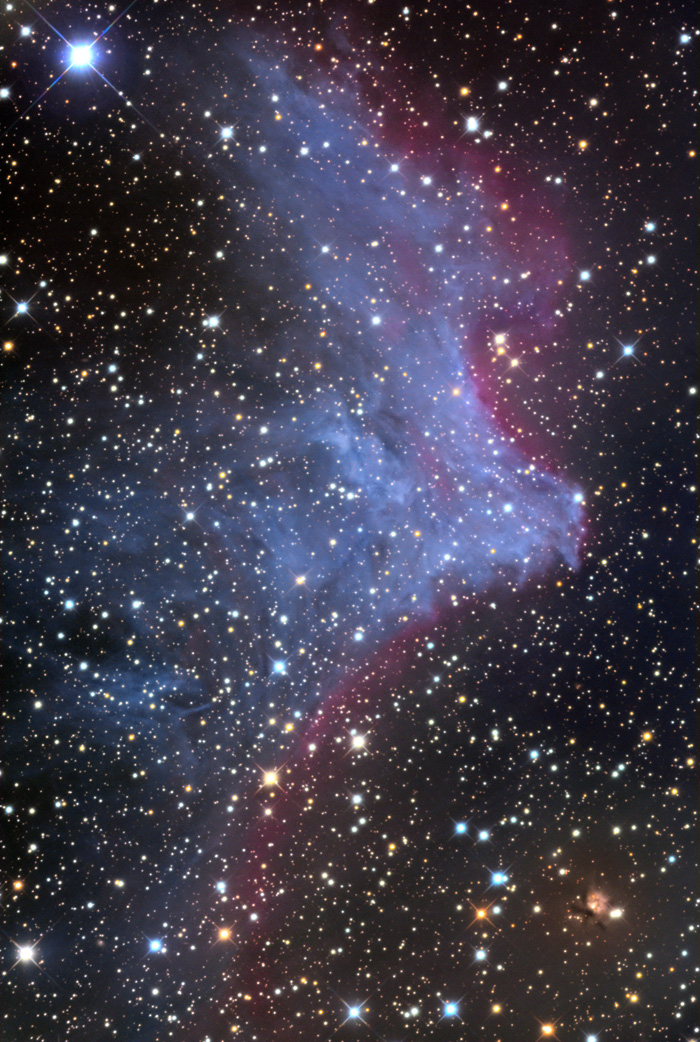|
Sh 2-185
Sh 2-185 is an H II region centered on the massive star system Gamma Cassiopeiae (γ Cas) in the northern constellation of Cassiopeia (constellation), Cassiopeia. It was included in the second ''Sharpless catalog, Catalogue of H II Regions'', published in 1959 by Stewart Sharpless. Sh 2-185 is located at a distance of approximately from the Sun. The region is surrounded by a dust shell, and displays several infrared point sources that are a characteristics of young stellar objects. This H II region includes the reflection nebula, reflection and emission nebulae IC 59 and IC 63. Both nebulae have a cometary shape, with IC 63 being the brighter of the two. The difference in appearance between the two nebulae is a consequence of their physical distance from γ Cas. IC 63 displays a well-defined ionization front, while this is lacking in IC 59. The nebulae are the closest photodissociation regions to the Sun. IC 59 This nebula was discovered by German astronomer Max Wolf on Decembe ... [...More Info...] [...Related Items...] OR: [Wikipedia] [Google] [Baidu] |
Gamma Cassiopeiae
Gamma Cassiopeiae, Latinized from γ Cassiopeiae, is a bright star A star is a luminous spheroid of plasma (physics), plasma held together by Self-gravitation, self-gravity. The List of nearest stars and brown dwarfs, nearest star to Earth is the Sun. Many other stars are visible to the naked eye at night sk ... at the center of the distinctive "W" asterism in the northern circumpolar constellation of Cassiopeia (constellation), Cassiopeia. Although it is a fairly bright star with an apparent visual magnitude of 2.47, it has no traditional Arabic or Latin name. It sometimes goes by the informal name Navi. It was observed in 1866 by Angelo Secchi, the first star ever observed with emission lines. It is now considered a Be star. Gamma Cassiopeiae is also a variable star and a multiple star system. Based upon parallax measurements made by the Hipparcos satellite, it is located at a distance of roughly 550 light-years from Earth. Together with its common-proper-moti ... [...More Info...] [...Related Items...] OR: [Wikipedia] [Google] [Baidu] |

